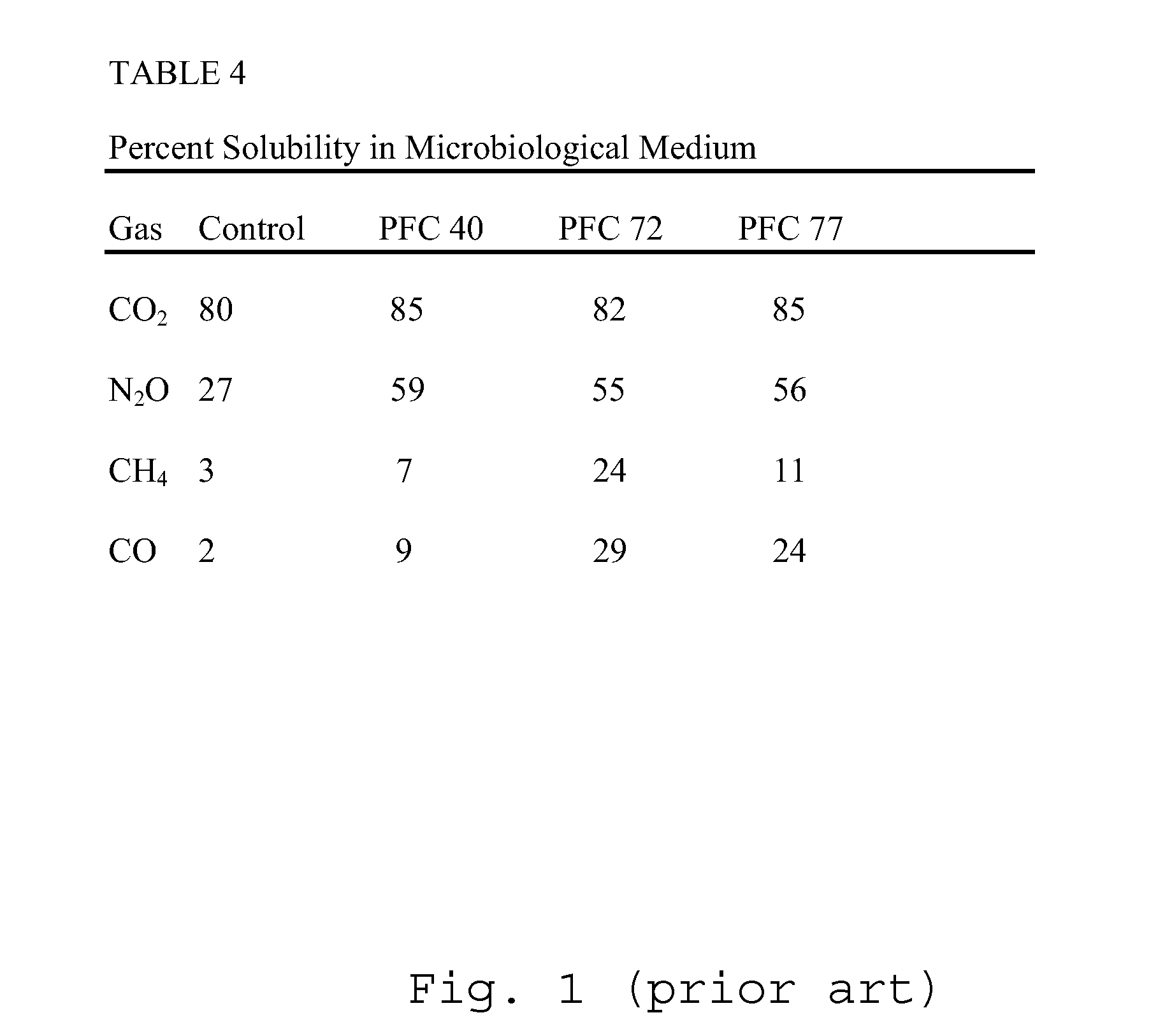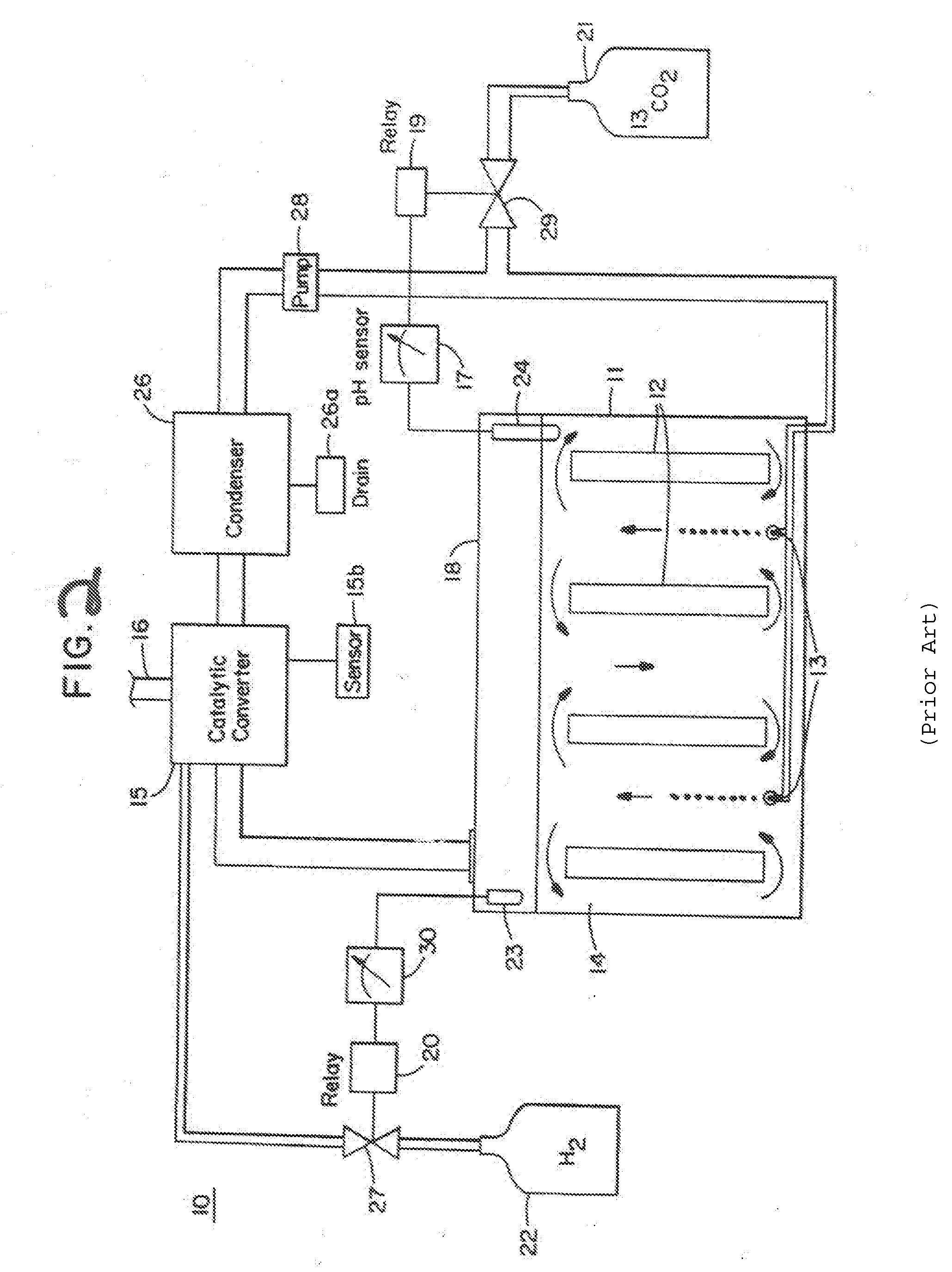Method for producing algae in photobioreactor
- Summary
- Abstract
- Description
- Claims
- Application Information
AI Technical Summary
Benefits of technology
Problems solved by technology
Method used
Image
Examples
example 1
[0041]An experiment for testing the solubility of carbon dioxide in a biological growth media, such as water, with and without the perfluorodecalin solution was conducted with test results shown in Table 1. The experiment consisted of placing a sample of algae into two separate vessels. One test vessel contained water only and labeled “water only”. The second test vessel contained water and perfluorodecalin solution and labeled “perfluorodecalin solution and water”. Next, carbon dioxide was added to both vessels containing algae. Algae contained in each vessel were provided light and nutrients to grow in addition to the water or water and perfluorodecalin solution to simulate a bioreactor. Note, the entire time period for testing was 48 hours with testing being done every 2 hours.
[0042]Referring to a graph in FIG. 4, the vessel with “water only” showed a continuous growth rate for the first 22 hours and then the growth rate for the algae stagnated. The vessel with “perfluorodecalin ...
example 2
[0044]An experiment for testing the amount of carbon dioxide that remains in a biological growth medium, such as water, with and without the perfluorodecalin solution after adding algae was conducted with test results shown in Table 2. One test vessel contained water only and labeled “water only”. The second test vessel contained water and perfluorodecalin solution and labeled “perfluorodecalin solution and water”. Next, carbon dioxide was added to both vessels.
[0045]After the carbon dioxide was added, a sample of algae was placed into the separate vessels. Algae contained in each vessel were provided light and nutrients to grow in addition to the water or water and perfluorodecalin solution to simulate a bioreactor. Note, the entire time period for testing was 48 hours with testing being done every 2 hours.
[0046]Referring to a graph in FIG. 5, the vessel with “water only” showed a continuous decline of partial pressure of carbon dioxide throughout the 48 hour period. The vessel wit...
PUM
 Login to View More
Login to View More Abstract
Description
Claims
Application Information
 Login to View More
Login to View More - R&D
- Intellectual Property
- Life Sciences
- Materials
- Tech Scout
- Unparalleled Data Quality
- Higher Quality Content
- 60% Fewer Hallucinations
Browse by: Latest US Patents, China's latest patents, Technical Efficacy Thesaurus, Application Domain, Technology Topic, Popular Technical Reports.
© 2025 PatSnap. All rights reserved.Legal|Privacy policy|Modern Slavery Act Transparency Statement|Sitemap|About US| Contact US: help@patsnap.com



